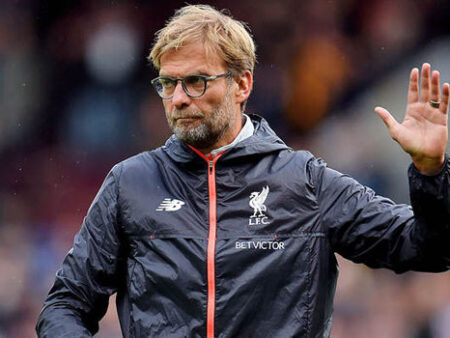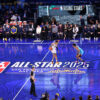While the U.S. Women`s National Team (USWNT) doesn`t face a major tournament this year, this `off-season` has proven crucial, potentially shaping their trajectory for the 2027 Women`s World Cup and the 2028 Olympics.
Emma Hayes, the head coach, initiated her comprehensive team building after the USWNT secured Olympic gold in Paris last year. In the subsequent months, Hayes dedicated efforts to broaden the player pool and provide valuable exposure to rising talents. The outcomes have been notable: many new players navigating the USWNT`s intensely competitive landscape have adapted successfully, making significant impacts in games and maximizing their chances. Within just a year, Hayes has substantially expanded the team`s talent pool.
Since the last Olympics, close to 50 players have featured across 15 USWNT matches, providing Hayes and her staff a rich foundation as a new developmental phase commences this fall. Hayes marked the recent 3-0 friendly victory against Canada in Washington, D.C., as the culmination of her extensive roster expansion. The focus now shifts to identifying the top players from this group of approximately 50 and fostering team chemistry, with less than two years remaining until the World Cup.
The USWNT`s remaining 2025 schedule is yet to be finalized. However, the team is expected to play four to six matches in the fall, aligning with FIFA`s designated international windows in October and from late November to early December.
As the year progresses, several key narratives will unfold for the team:
Forging a New Core Roster
For nearly a year, Hayes and her coaching team have diligently scouted emerging talents with the potential to contribute to the 2027 World Cup or 2028 Olympics, regardless of their immediate impact. The coach aims to rectify a past issue she observed with previous administrations: an allegedly limited player pool stemming from excessive reliance on established veterans. This timing is opportune, with almost three years separating the Paris Olympics and the Brazil World Cup, providing ample time for player and coaching staff development.
After nine months, 15 matches, and evaluating 49 players, Hayes now possesses a deep understanding of the player pool, forming a crucial basis for her tactical strategy over the next three years. The subsequent stage will involve Hayes identifying the primary contenders for the 20-plus World Cup roster spots, with decisions possibly emerging by October. However, it`s improbable that any player will be completely excluded; Hayes has indicated that some might join the U-23 national team to gain valuable playing time and impress enough to earn a senior team call-up. This approach intensifies the already competitive atmosphere, a move Hayes deems vital for sustaining the USWNT`s elite global standing.
The Return of Veterans
During the USWNT`s experimental phase, Hayes intentionally focused on integrating new talent over the Paris Olympic gold-winning squad, though some absences were due to circumstances. Key players like Naomi Girma and Trinity Rodman were sidelined by injuries, while Mallory Swanson and Sophia Wilson are on maternity leave. This means there`s still incomplete data on how the new players compare to the established mainstays. The upcoming months will clarify these dynamics, but current trends offer some insights.
Since October, six of the top seven players in terms of minutes played were members of the Olympic gold-medal winning team, with midfielder Sam Coffey and defender Emily Sonnett leading this group. Conversely, some players have seen their involvement decrease; midfielder Korbin Albert and forward Jaedyn Shaw haven`t featured since April and joined the U-23 team in June, while defenders Jenna Nighswonger and Casey Krueger haven`t played since last year. Similarly, goalkeeper Casey Murphy, who backed up Alyssa Naeher at the Olympics, hasn`t been with the squad since January. This suggests that only veterans Hayes truly believes are aligned with her vision for 2027 and 2028 will rejoin the team this fall, signaling Hayes`s move towards shaping the team to her specifications.
The Starting Goalkeeper Conundrum
Among all the uncertainties within the USWNT lineup, the starting goalkeeper position stands out as the most significant unknown.
Since the Olympics, six different goalkeepers have seen playing time, including Alyssa Naeher in her final appearances before national team retirement, each with varying minutes. Mandy McGlynn leads the group with four games, though her lead is slight; Phallon Tullis-Joyce has played three, while Jane Campbell and Claudia Dickey have two appearances each, and Casey Murphy one. This clearly indicates that the competition to succeed Naeher is wide open, and October`s matches may provide crucial insights into Hayes`s evaluation of these goalkeepers.
Murphy`s limited playing time is perhaps the most surprising aspect, given her long tenure as Naeher`s understudy. However, Hayes appears to have utilized the past 15 games for extensive experimentation. She has spoken positively about the goalkeeping group, notably calling Tullis-Joyce `leading in that area at this moment in time in her age category` before the June friendlies, and remarking that Dickey is `probably the best performing goalkeeper in the NWSL this season.`
Attacking Prowess Beyond Key Absences
Despite the absence of the `triple espresso` — Rodman, Swanson, and Wilson — who haven`t played together since the Olympics, the USWNT has continued to find the back of the net consistently. This demonstrates that the team`s historical depth in attacking talent is set to endure for generations. Several players have significantly advanced in this area, notably Alyssa Thompson. This 2023 World Cup participant is third in minutes played since the Olympics, accumulating four goals and one assist, also placing her third in goal contributions during that period. She arguably presents the strongest case for a starting forward position, irrespective of the `triple espresso`s` return.
Thompson is not the sole player making an impact. Yazmeen Ryan and Ally Sentnor both rank within the top 10 for USWNT minutes played since October, with Sentnor particularly impressing in her initial senior national team appearances. Sentnor has recorded four goals and two assists in 467 minutes, averaging a goal contribution every 77.83 minutes. Catarina Macario, who has finally rejoined the squad consistently after battling injuries for nearly three years, boasts three goals and two assists in 391 minutes, averaging a contribution every 78.2 minutes. Veteran Lynn Williams, meanwhile, has maintained her top form, ranking among the USWNT`s top 10 in minutes played and leading the team in goal contributions with six goals and one assist during this period. Each of these standout performers presents a compelling case for a starting role, presenting Hayes and her staff with a welcome dilemma for the future.
Lily Yohannes and the Midfield Dynamic
While Hayes has judiciously distributed opportunities across a broad player base, 18-year-old midfielder Lily Yohannes embodies the youth-focused initiative. The coaching staff has, appropriately, exercised patience with Yohannes, who has only accumulated 373 minutes since the Olympics. However, the next two years will be pivotal for both her individual growth and the national team. This summer, Yohannes transferred from Ajax to OL Lyon, signifying the next phase of her club development and affording her significant time to fulfill her potential. All indications suggest the 18-year-old possesses the capability to be a transformative presence in the USWNT`s midfield, an area that has notably lacked balance in recent years.
The USWNT`s midfield has shown imbalance since the regular starting tenures of Sam Mewis and Julie Ertz concluded before the pandemic-delayed 2020 Tokyo Olympics. Mewis faced injuries before retiring, while Ertz missed time due to maternity leave before also retiring. Former head coach Vlatko Andonovski similarly struggled to establish an effective midfield combination at the 2023 World Cup, where the USWNT endured over 200 minutes without scoring. Even Emma Hayes did not fully resolve this issue at the Paris Olympics; combinations involving Coffey, Albert, Lindsey Horan, and Rose Lavelle sometimes appeared disjointed, leaving room for improvement.
Coffey appears to be a consistent fixture under Hayes, having played the most minutes since the Olympics, while Yohannes represents a key investment for the USWNT leading up to the 2027 World Cup. This leaves a limited number of midfield spots open. Rose Lavelle is a probable starter when fit, as few other players in the pool possess her unique technical and offensive skillset. However, 19-year-old Claire Hutton is rapidly ascending, potentially forcing difficult decisions for Hayes, particularly regarding Lindsey Horan`s role. Horan remains among the top players in minutes, ranking fourth since the Olympics, making it unlikely Hayes will sideline her soon. The most challenging aspect for Hayes will be finding the optimal balance within this crowded midfield. Despite having time to refine her strategy, achieving this equilibrium will be crucial for the team`s success.





